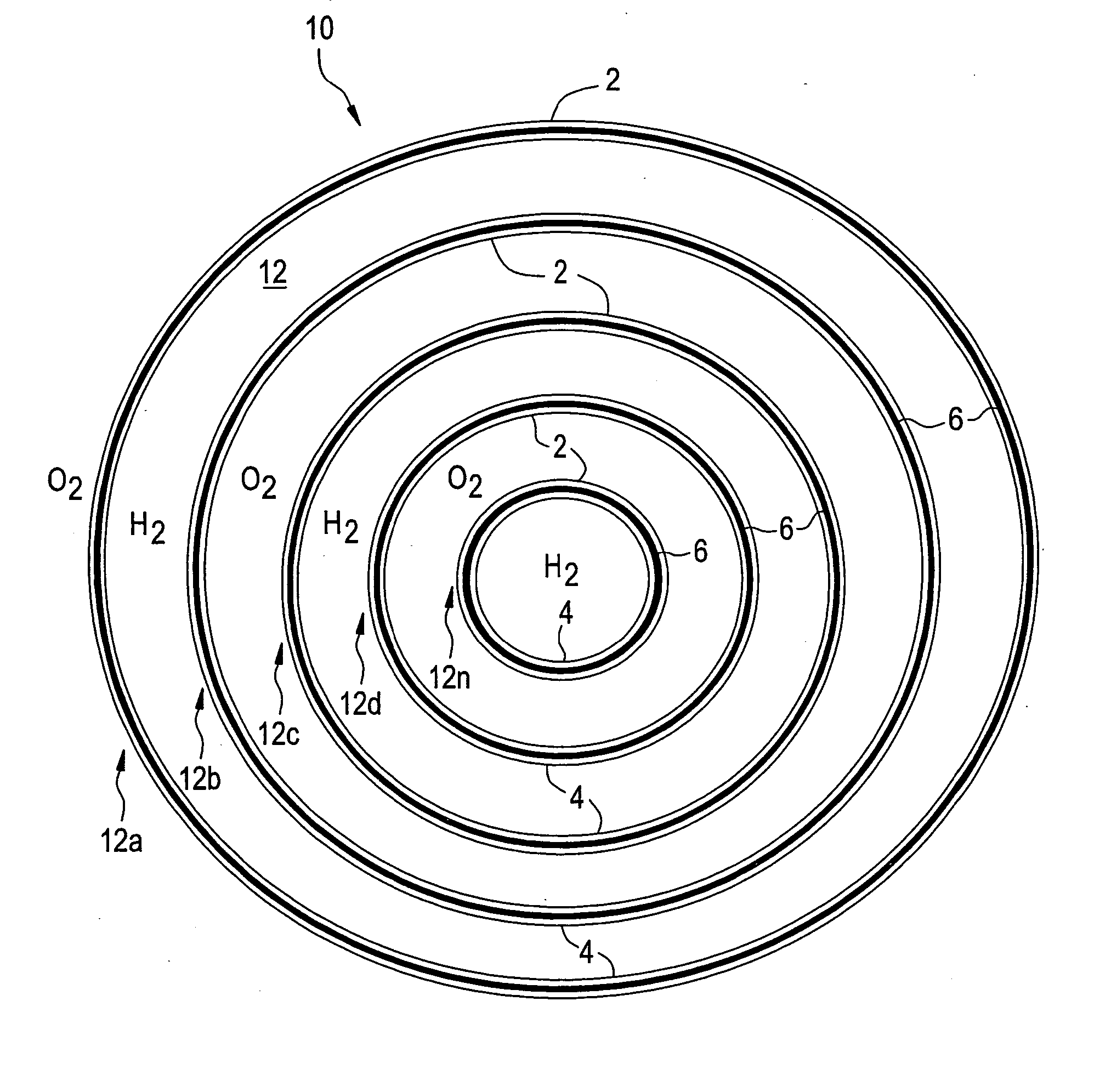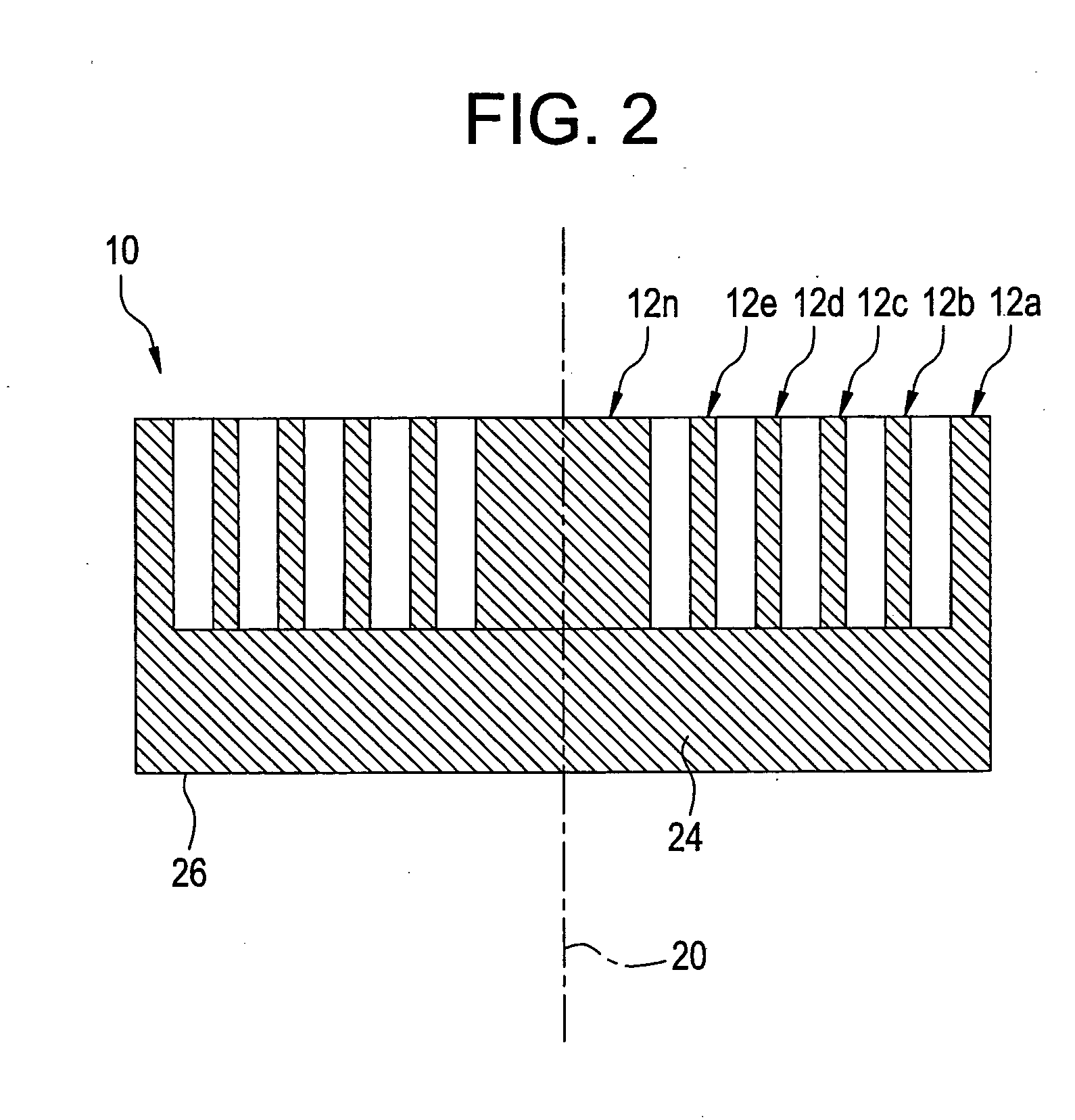Solid state electrochemical devices
a solid-state electrochemical and cell technology, applied in the field of electrochemical cell stacks, can solve the problems of increasing size, increasing the size, and the inability of cells to generate voltages greater than about 1 volt, so as to increase the fuel utilization rate, increase the power packing density, and consume rapid
- Summary
- Abstract
- Description
- Claims
- Application Information
AI Technical Summary
Benefits of technology
Problems solved by technology
Method used
Image
Examples
example 1
[0039] In this paper example, the power as well as the volumetric power packing density for a stack having tubular electrochemical cells was studied as a function of the outer diameter of a tubular electrochemical cell. FIG. 3 is a graphical representation of the power as well as the volumetric power packing density (for a stack having tubular electrochemical cells) plotted versus the inner tube diameter. The electrochemical cells were arranged concentrically and the number of cells was increased from 1 to 3 to 5. The active length of the tube was 10 centimeters and the power density was 0.2 watts / square centimeter (W / cm.sup.2). The power generated as well as the volumetric power packing density for the electrochemical cells having 1, 3 and 5 cells respectively are shown in Tables 1, 2 and 3 respectively. The variation in the distance between successive tubes for the electrochemical cells having 3 and 5 electrochemical cells respectively are shown in Tables 2 and 3.
[0040] The result...
example 2
[0044] This paper example demonstrates how a high volumetric power packing density may be achieved in a fuel cell stack by stacking electrochemical cells in a manner such that with the exception of the outermost cell, each successive cell is placed within another cell. In this paper example, the volumetric power packing density in kW / L (kilowatt / unit length) generated by two different configurations of electrochemical cell stacks were compared. In one configuration, a single tubular electrochemical cell was used to determine the volumetric power packing density. In the other configuration, an electrochemical cell stack having 3 and 5 concentrically arranged electrochemical cells respectively were used to determine the volumetric power packing density. The volumetric power packing density (P.sub.v) developed in the cells was computed using the equation (I) below: 4 P v = 4 P an ( d 1 +n -1 2 d ) [ d 1 + ( n - 1 ) d ] 2 ( I )
[0045] where P.sub.a is the average power generated by the e...
PUM
| Property | Measurement | Unit |
|---|---|---|
| distance | aaaaa | aaaaa |
| voltage | aaaaa | aaaaa |
| temperatures | aaaaa | aaaaa |
Abstract
Description
Claims
Application Information
 Login to View More
Login to View More - R&D
- Intellectual Property
- Life Sciences
- Materials
- Tech Scout
- Unparalleled Data Quality
- Higher Quality Content
- 60% Fewer Hallucinations
Browse by: Latest US Patents, China's latest patents, Technical Efficacy Thesaurus, Application Domain, Technology Topic, Popular Technical Reports.
© 2025 PatSnap. All rights reserved.Legal|Privacy policy|Modern Slavery Act Transparency Statement|Sitemap|About US| Contact US: help@patsnap.com



